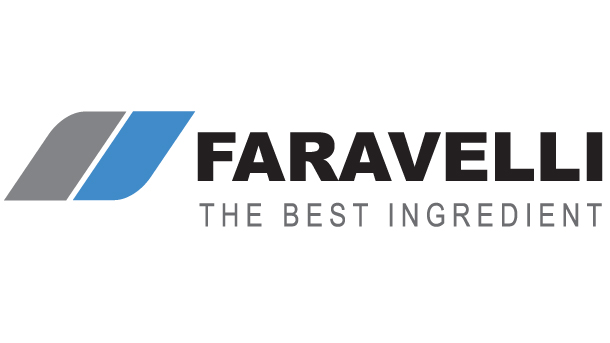Promotional Features
A chlorate-free company with a full range of healthy foods
Chlorates originate from chlorine disinfectants that are widely and legally used in water treatment and in food processing; drinking and cooking water are by far the main contributors to chlorate in food and feed ingredients.
A by-product of chlorine-based products, chlorates are used to purify drinking water. They are also used in the food processing industry as a disinfectant.
Identified and studied for more than 50 years, chlorates are technically named as Disinfection By-products by the World Health Organization.
They are accepted by the international community as a common by-product.
Sodium chlorate (NaClO3) is a salt still widely used in agriculture as a desiccant.
The European Union, while prohibiting the use of sodium chlorate on the field, has made sure to reduce its use by allowing a minimal quantity of it in food products.
In 2018 USDA released guidance titled The Use of Chlorine Materials in Organic Production and Handling
Chlorate admitted levels in foods: the EFSA statement
Although ultraviolet water purification is the most effective method for disinfecting water, it is also extremely expensive. Chlorine disinfectants are used as alternative and cost-effective methods. However, as a by-product of chlorine use, chlorates represent a hazard to human health as they could interfere with iodine metabolism and impair oxygen exchange in the blood according to the EFSA (European Food Safety Authority).
Chlorinated and perchlorinated residues in foodstuffs have become a crucial issue for any food processing company working within the European market since 2020, when the EU limits became officially applicable.
Maximum levels for pesticide residues in or on food and feed of plant and animal origins had already been set by Regulation (EU) No 396/2005 in 2005 to 0,01 ppm, which is an instrument detection limit.
A decade later - in 2017 – the EU Member States approved a multi-disciplinary action plan aiming at lowering chlorate levels and reducing the exposure. The plan set maximum admitted levels of chlorates in drinking water and hygiene water and put into force some actions to lower maximum residual levels in food and feed products.
For this reason, Commission Regulation 2020/749, that came effectively into force on 28 June 2020, set a "default" limits to admit “contamination” by chlorate after harvesting (i.e. food transformation process using water) and will remain in force provisionally until 2025 to see the results in terms of reduction.
With regards to chlorates, Regulation 2020/749 states that if residues arise from the use of chlorine solutions in food processing and drinking water treatment, then maximum levels should be set at a level that is "as low as reasonably achievable," adhering to good manufacturing practices (GMPs) and granting good hygiene practices.
In this way food processors are required to implement any measures to prevent and reduce chlorate levels in foods as much as possible to protect public health.
Chlorates in organic products: the USDA opinion
In 2018 USDA released guidance titled The Use of Chlorine Materials in Organic Production and Handling.
In May 2011, the USDA National Organic Program (NOP) published guidance on the policy within the NOP regulations concerning the use of chlorine in organic handling and production.
The document allows the use of chlorine materials in organic crop production, organic food processing and organic livestock production with an annotation stating that: “Allowed for disinfecting and sanitizing food contact surfaces. Residual chlorine levels for wash water in direct crop or food contact in flush water from cleaning irrigation applied to crops or fields cannot exceed the maximum residual disinfectant limit in the Safe Drinking Water Act (currently 4 mg/L).”
Why you can still find chlorates in drinking water
Any activity after harvesting that involves the use of drinking water will inevitably increase the level of chlorates in foods.
Drinking water naturally contains an amount of hypochlorite or chlorine dioxide that is admitted by the law.
Even when you use tap drinking water to cook you will add minimum levels of chloride to foodstuffs.
Consequently, chlorates can be found everywhere; however, continuous exposure is a crucial issue for the health of the population.
A whole range of chlorate-free food ingredients
Naturis is an Italian company whose food ingredients are currently distributed in North America thanks to the partnership with Faravelli, Inc.
The Italian company recently announced its status as a chlorate-free company. Thanks to intense R&D activities and investments, Naturis managed to eliminate the presence of chlorine in the water used to process food ingredients, thus getting products that are healthier and completely free of the contaminant.
Its products and ingredients are processed using a particularly high-quality water coming from an extraordinary mountain area, that of the Dolomites, which is a mountain range in the northern Italian Alps. With its 18 peaks rising to above 3,000 metres and covering 141,903 ha, this area is of such stunning beauty that it has been declared a United Nations World Heritage Site since 2009.
Naturis can therefore guarantee that all its line of rice, cereals, legumes, both organic and “conventional”, can be supplied and certified as "chlorate-free" on request for an even higher level of food safety.
In fact, quinoa syrup, one of the latest launches by Naturis, is a chlorate-free product.
It is a great alternative to rice and corn syrup and ideal for balanced vegan diets.
Quinoa syrup is manufactured using chlorate-free waters and natural enzymes only starting from quinoa flour hydrolysis.
The process can convert carbohydrates and reach the degree of sweetness required by the customer.
This syrup is manufactured starting from the seeds of quinoa, among the oldest and most precious foods in the world with excellent nutritional properties: it provides a significant energy intake and contains high-quality proteins (14%) and lipids.
With its intense aroma and delicate aftertaste, quinoa syrup is a great sweetener for baked goods, breakfast cereals, snacks, bars, granola, ice creams, and low-sugar drinks.
Like all Naturis products it is made in Italy and available in North America thanks to Faravelli Inc., a North American food ingredients distributor.



